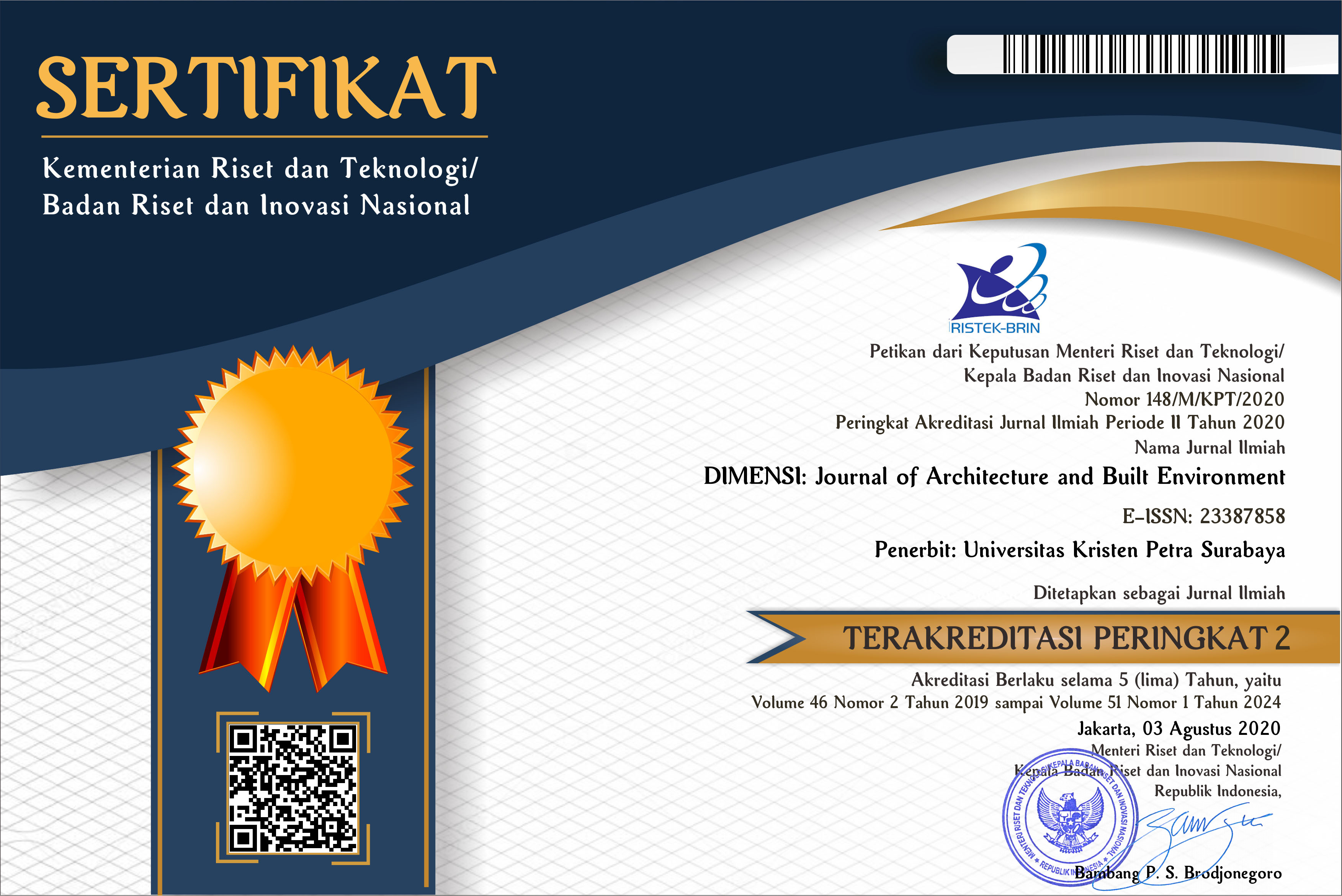PEMBERIAN CIRI LOKAL PADA ARSITEKTUR KOLONIAL LEWAT ORNAMEN PADA AWAL ABAD KE-20
 :
:
https://doi.org/10.9744/dimensi.39.1.37-50
Keywords:
Colonial Buildings in The Late 19th and Early 20th Centuries, Ornament.Abstract
The purpose of this initial study is to show the existence of efforts in giving local characters to colonial architecture buildings which were built at the end of 19th century and early 20th century. One way is through the use of ornaments or decorative theme themes applied to the building which is using local characters. Some of the ornaments turned out out to be designed by famous artists of that era. The existence of these ornaments slowly disappeared because of the doctrine of modern architecture such as ornament and crime or form follow funtion, etc. which seems to forbid the existence of decorative ornaments on the building. This initial study also identifies people behind the beautiful ornament designs whom are now less well known. They are WOJ Nieuwenkamp (1874-1950) and Jan Toorop (1856-1928) as well as a stained glass maker Jan Schouten (1852-1937), as a leading world-class artists of this era. These people participated in building the colonial buildings in Indonesia early 20th century.Downloads
Download data is not yet available.
Downloads
How to Cite
., H., & Irwan, S. (2013). PEMBERIAN CIRI LOKAL PADA ARSITEKTUR KOLONIAL LEWAT ORNAMEN PADA AWAL ABAD KE-20. DIMENSI (Journal of Architecture and Built Environment), 39(1), 37-50. https://doi.org/10.9744/dimensi.39.1.37-50
Issue
Section
Articles
License
Authors who publish with this journal agree to the following terms:
- Authors retain copyright and grant the journal right of first publication with the work simultaneously licensed under a Creative Commons Attribution License that allows others to share the work with an acknowledgement of the work's authorship and initial publication in this journal.
- Authors are able to enter into separate, additional contractual arrangements for the non-exclusive distribution of the journal's published version of the work (e.g., post it to an institutional repository or publish it in a book), with an acknowledgement of its initial publication in this journal.
- Authors are permitted and encouraged to post their work online (e.g., in institutional repositories or on their website) prior to and during the submission process, as it can lead to productive exchanges, as well as earlier and greater citation of published work (See The Effect of Open Access).


















